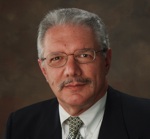STAFDA 2010 Session Preview: Banking on credit
The outlook for distributor bank credit 2011.
 |
 |
 |
| WHEN AND WHERE M. Jay Heilbrunn and Herb Shields of The Distributor Board will present the “Outlook for Distributor Bank Credit” panel discussion from 1:00 to 2:30 p.m. and again from 3:00 to 4:30 p.m. on Sunday, Nov. 7. |
Many bankers will tell you that distributors can be good credit risks due to the real tangible assets of inventory, receivables and equipment. Distributors are positively viewed because they tend to be “more nimble and able to react” to changing market conditions.
Distributors are naturally a good fit for “asset-based lending.” Whereas “cash flow lending” is “covenant-rich”, asset-based lending relies on more stringent evaluation of receivables, inventory and equipment. “Asset-based lending is more intensive on valuing assets and lighter on covenants.”
In evaluating distributors as credit risks, bankers seek answers to a couple of key questions: How much value is the distributor adding? And, is the business model sustainable? If distributors are adding value, have good contracts, strong receivables and well-managed inventory, their access to credit should not be a problem. The question that remains is how much credit will they be granted.
There are several characteristics which bankers point out that make for a preferred distributor client:
- Diversified customer base
- Marketable inventory that is not specialized
- Good supplier and customer relationships
- Not selling to high-risk customers or “crazy” terms
- Healthy capitalization
- Ownership lacks large obligations outside the company
- Good accounting methodology and reporting
- Stringent markdowns of slow moving inventory
- “Whatever eliminates uncertainty.”
A critical historic part of lending is what is called “advance rates,” the percentages of assets that a bank will lend against. The rule of thumb historically has been that distributors can borrow 75-85% on receivables and 35-65% on inventory, depending on turnover ratios.
Many bankers are seeing these rates dropping. They estimate that they will be lower by approximately 5% during 2010, so if you are at 80% plan on 75%.
Very important here is the “quality” of the receivables and inventory. If inventory is too “specialized”, it will have lower advance rates. Bankers are looking more closely at “Who is the distributor selling to?” One banker indicated that overall, “The ‘evaluation’ is more stringent. We will be scrutinizing receivables and inventory a lot more, which will mean a greater number of audits.”
Expected advance rates in 2011 are one important area we will be exploring during our STAFDA Conference panel discussion.
The expectation is that there will be fewer banks and therefore less competition. One banker suggested that, “Banks need to be considered a core supplier. If your bank closed tomorrow, what would you do?” The recommendation is to have a “second” bank, just in case. For distributors it will be important to find out, “What is the lender’s financial position?” They may not be in good condition; therefore caution should be used before developing a relationship with a particular bank.
One banker indicated that “rates” have been going up by 150-200 basis points. If you are paying 3% now, you may be paying 5% in the future. The difference between the past and now is reporting, which increasingly needs to be done on a timely basis.
Covenants are not a joke anymore. If a company is late it may go into workout faster than ever. Over-communicate your situation so that your banker is well informed before your quarterly financials are presented to them. Distributors must be prepared for more questions and scrutiny about their financial situation.
Alternate sources
Many underperforming distributors will be pushed into “factoring” and other higher interest rate financing companies. The cost of loans will go up as the number of financial institutions goes down. This may force more distributors into non-conventional financing, such as seeking help from the manufacturing sector.
Distributors should give consideration to tax-exempt financing. A banker can lend money at a tax-exempt rate if, for instance, a distributor is building a warehouse in a certified enterprise zone. Helping to create jobs in an economic recovery zone may also allow a bank to offer a tax exempt rate. A loan of this nature may receive a 20-30% discount over standard rates.
Banks indicate that opportunities may exist for distributor growth through acquisition. This may be an opportune time to consider buying a competitor or expanding into a new market through acquisition. A distributor with cash and a strong history of performance will be a highly sought-after customer of many financial institutions. Conversely, a deal that drags a company down will have a lot of trouble getting financed.
Distributors who are going to be successful are those who are reliable. Their ability to pay on time is a benefit for suppliers. Liquidity will provide a competitive edge and allow for additional growth while others are contracting.
Working capital financing is critical for distributors and provides the capacity to grow market share. Successful distributors will take advantage of their situation and most likely will be more successful in years to come.
What are the projections for 2011? During the conference we will be reporting on a survey of STAFDA members. Some questions we will be addressing include:
- How important is bank financing to your operation?
- Has the relationship with your bank changed over the past 12 months?
- Have distributors been able to increase credit lines?
- What are current advance rates against assets?
- Have bank covenants been changing?
- How has the availability of credit, or lack thereof, impacted distributor businesses in terms of products, customers, equipment and hiring?
- Are non-bank forms of financing being considered?
Coming to a new year near you
For most distributors, credit is a critical part of the business. Just as in 2010, 2011 will offer challenges in obtaining credit. Will good business practices, regular reporting, willingness to pay higher rates, being subjected to greater scrutiny, and maintaining a strong relationship with your banker be enough?
We will be reporting more at the upcoming STAFDA conference where our panel will include:
- Mr. David Altig, director of research at the Federal Reserve Bank
- Mr. Chuck Gitles, vice president in the commercial lending department of American Chartered Bank
- Mr. Dean A. Rennell, regional president and manager for Wells Fargo Business Banking in Arizona
- Mr. John Weber, senior vice president of middle market banking for Associated Bank
We hope to see you there. CS
The Distributor Board builds value for distribution companies through expertise in planning, sales, marketing, M&A, organizational development, information technology, warehouse operations, sourcing, logistics and transportation. Principals are: M. Jay Heilbrunn, David Panitch, and Herb Shields. Web site: www.TheDistributorBoard.com.
















